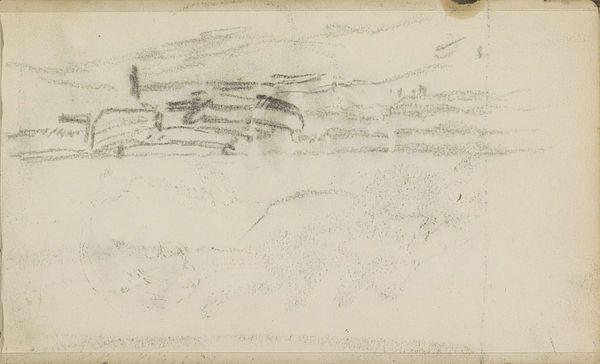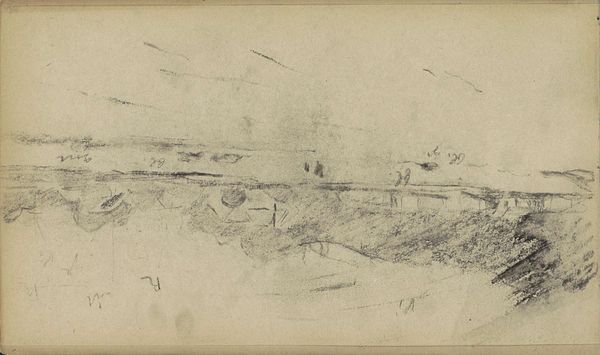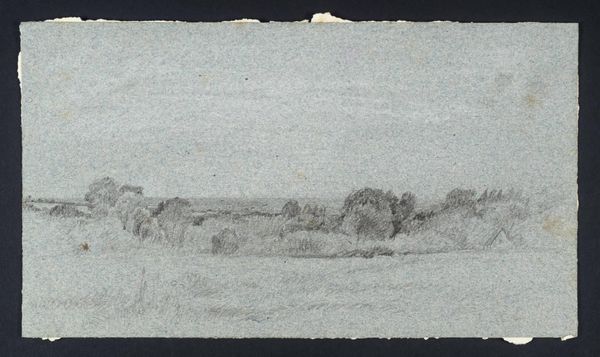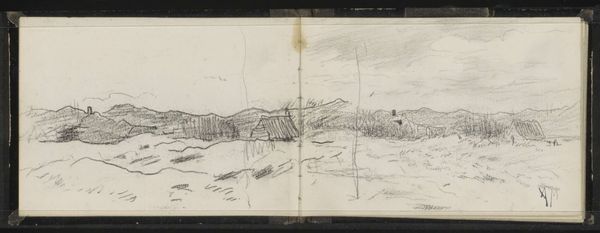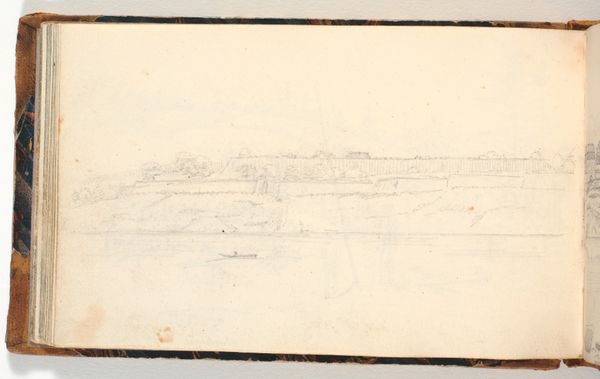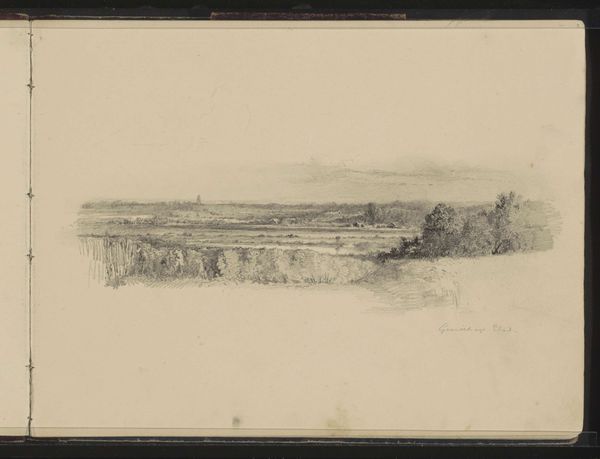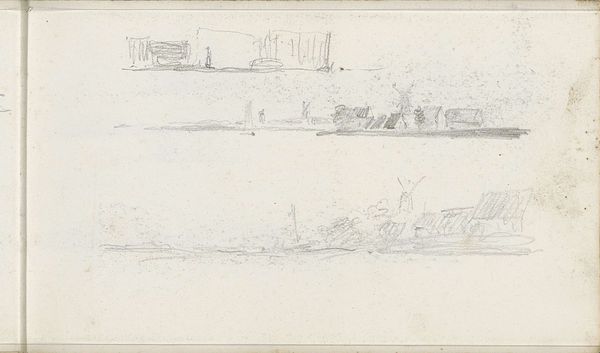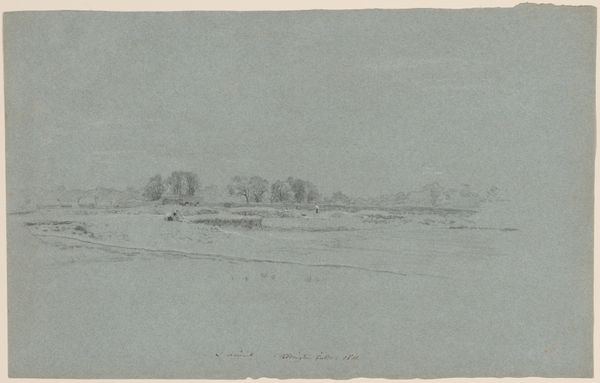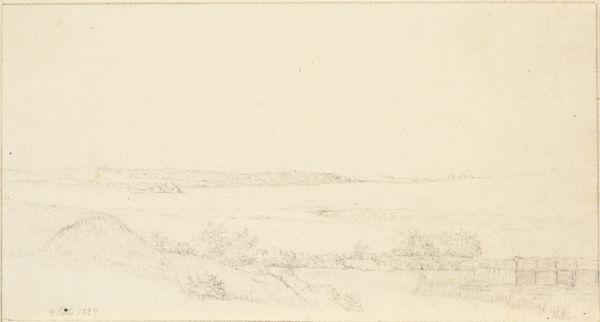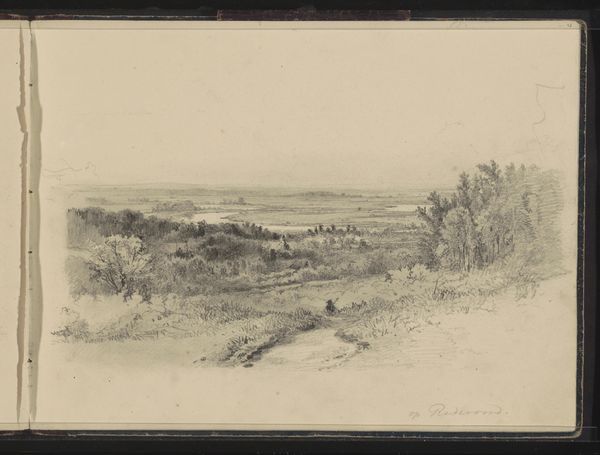
drawing, paper, dry-media, pencil, chalk, graphite
#
drawing
#
landscape
#
paper
#
dry-media
#
pencil
#
chalk
#
graphite
Copyright: Public Domain
Curator: I’m immediately drawn to the ethereal, almost haunting quality of this sketch. The horizon line is so faint. Editor: Indeed. We're looking at a work simply titled "Landscape," a drawing currently housed in the Städel Museum. It appears to be a study rendered in pencil, chalk, and graphite on paper, a combination that really lends itself to capturing subtle gradations. Curator: The choice of materials emphasizes the scene’s transient mood, don't you think? Graphite offers a metallic hardness while chalk suggests transience. It evokes a memory, perhaps, of a landscape slipping away. A place half-remembered. The paper itself contributes to that feeling, possessing a fragile quality. Editor: Absolutely, I agree. This piece resonates with notions of liminal spaces and borders. In what time, space, or nation is this place rooted? This work encourages us to reconsider how land is politically charged, often fought over for ideological expansion. How is this landscape reflective of cultural imperialism, where those who hold power are permitted to define those outside of the in-group. Curator: An interesting viewpoint! It seems to resonate on many different planes, both political and spiritual. This use of line evokes a sort of symbolic boundary. Is it a border between conscious and unconscious thought, or civilization and wilderness, or visibility and obscurity? Editor: All those oppositions reflect a fundamental struggle—domination. Consider the act of claiming a "landscape" – it implies ownership and control. How do these symbols operate within a legacy that promotes the commodification of the earth and its resources for societal and individual gain? Curator: But doesn't landscape as a symbol predate modernity? We've always had an intrinsic psychological relationship with the land. Editor: True. However, contemporary critical theory urges us to view even the pastoral through a decolonizing lens. "Landscape" reminds us that the Earth bears scars. Curator: Scars and also potential. The work also expresses humanity’s smallness within a larger, timeless continuum. It contains space for a meditative reflection, perhaps also, a reconciliation with time and space. Editor: I’d agree that this art facilitates deep meditation, but meditation can spur action, if directed. By connecting to the image we should act upon its message to benefit oppressed people of all races, genders, or backgrounds. Curator: Perhaps art is a reflection that promotes inward change first, thus resulting in outward change? Thank you for joining me today as we unpacked that dense intersection between identity and nature. Editor: The conversation was invaluable; I encourage the viewer to unpack it for themselves. Thank you.
Comments
No comments
Be the first to comment and join the conversation on the ultimate creative platform.
